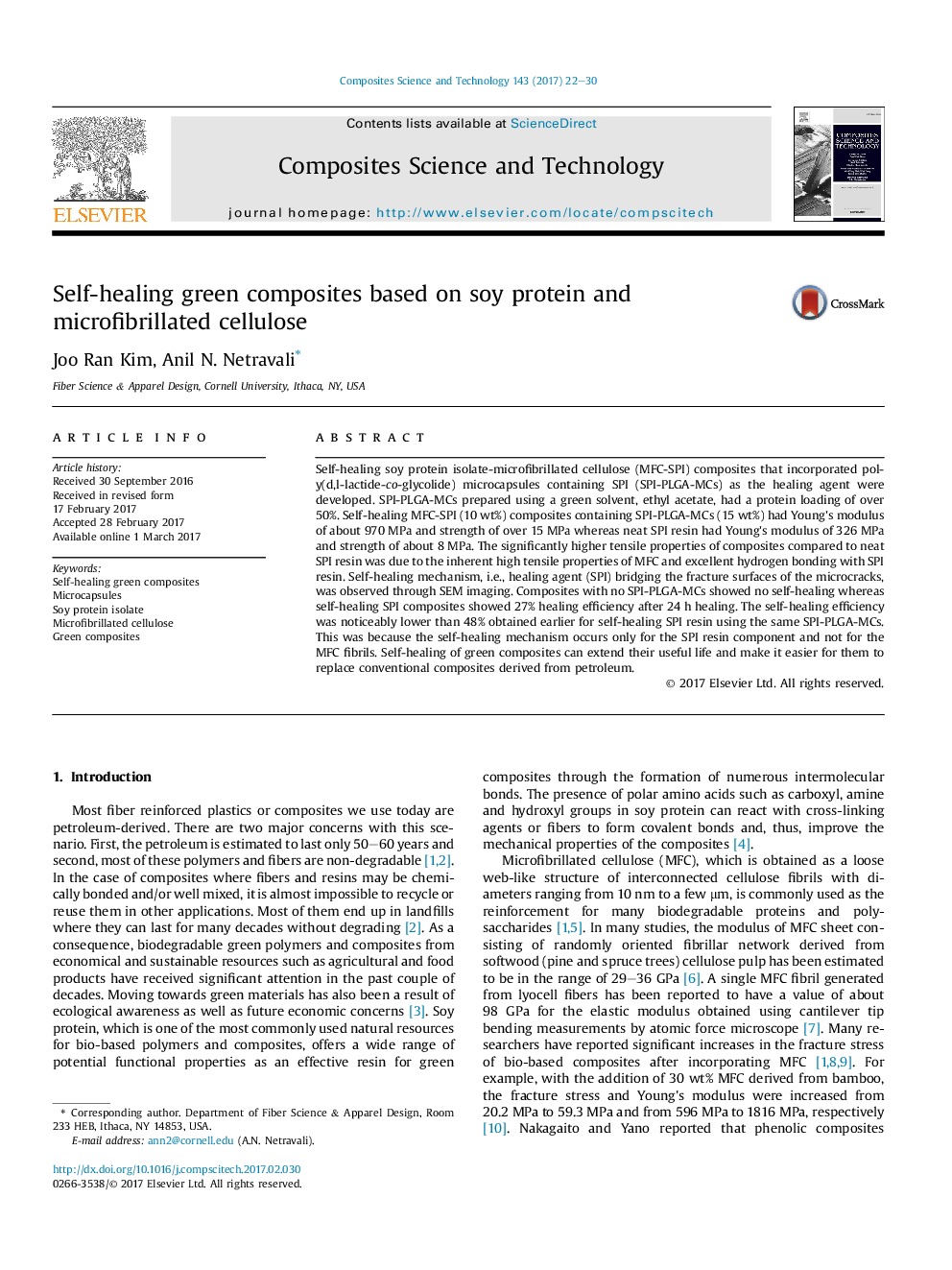| Article ID | Journal | Published Year | Pages | File Type |
|---|---|---|---|---|
| 5022318 | Composites Science and Technology | 2017 | 9 Pages |
Abstract
Self-healing soy protein isolate-microfibrillated cellulose (MFC-SPI) composites that incorporated poly(d,l-lactide-co-glycolide) microcapsules containing SPI (SPI-PLGA-MCs) as the healing agent were developed. SPI-PLGA-MCs prepared using a green solvent, ethyl acetate, had a protein loading of over 50%. Self-healing MFC-SPI (10Â wt%) composites containing SPI-PLGA-MCs (15Â wt%) had Young's modulus of about 970Â MPa and strength of over 15Â MPa whereas neat SPI resin had Young's modulus of 326Â MPa and strength of about 8Â MPa. The significantly higher tensile properties of composites compared to neat SPI resin was due to the inherent high tensile properties of MFC and excellent hydrogen bonding with SPI resin. Self-healing mechanism, i.e., healing agent (SPI) bridging the fracture surfaces of the microcracks, was observed through SEM imaging. Composites with no SPI-PLGA-MCs showed no self-healing whereas self-healing SPI composites showed 27% healing efficiency after 24Â h healing. The self-healing efficiency was noticeably lower than 48% obtained earlier for self-healing SPI resin using the same SPI-PLGA-MCs. This was because the self-healing mechanism occurs only for the SPI resin component and not for the MFC fibrils. Self-healing of green composites can extend their useful life and make it easier for them to replace conventional composites derived from petroleum.
Related Topics
Physical Sciences and Engineering
Engineering
Engineering (General)
Authors
Joo Ran Kim, Anil N. Netravali,
